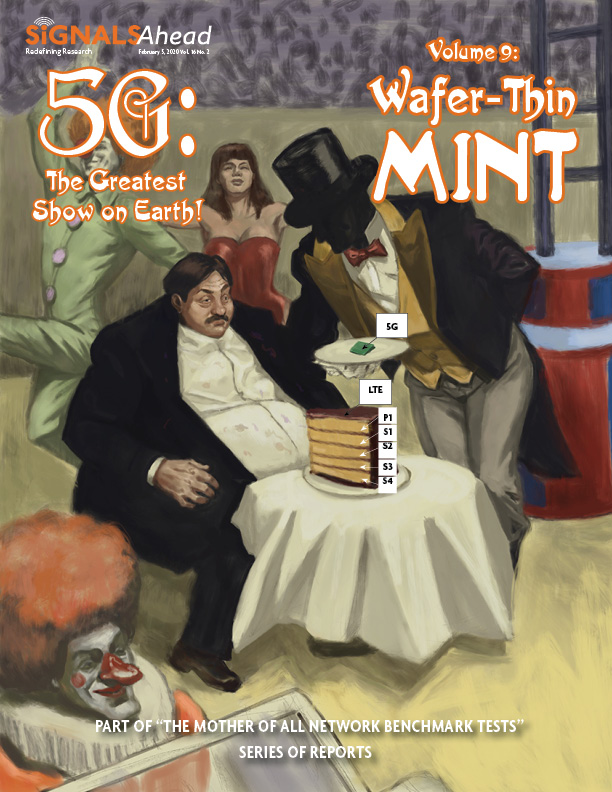Summary
 SRG just completed its ninth 5G benchmark study, this time with a focus on AT&T’s 5G NR network, which is deployed as a 5 MHz FDD carrier in Band n5. We did the testing over two separate weekends in Indianapolis, Indiana.
SRG just completed its ninth 5G benchmark study, this time with a focus on AT&T’s 5G NR network, which is deployed as a 5 MHz FDD carrier in Band n5. We did the testing over two separate weekends in Indianapolis, Indiana.
Key Highlights from our Study
Our Thanks. We did this study in collaboration with Accuver Americas, Rohde & Schwarz, and Spirent Communications who provided us with their respective test equipment and platforms, which we identify in the report. SRG did all the testing and analysis of the data and we are solely responsible for the commentary in the report.
Our Methodology. We did drive testing over two different weekends in January, covering AT&T’s published coverage map for Indianapolis. Our 2nd trip was done to obtain a better representation of the operator’s actual 5G coverage area. In total, we transferred well more than 500 GB of data between the two trips.
Its only Incremental. As one might expect, 2×5 MHz 5G NR doesn’t offer any meaningful improvement in data speeds or the user experience when introduced on top of the operator’s very impressive LTE-A network which supports up to 5CA and LAA. 5G NR peak downlink throughput [PDSCH] was 40.2 Mbps, compared with 494 Mbps (LTE) and 678 Mbps (LTE with LAA). All uplink user data traffic presently goes over LTE.
5G NR was Hard to Find. Although the published coverage map was clearly optimistic, the bigger challenge was getting the smartphone to stop using a low-band LTE frequency and switch to 5G NR. This issue can be addressed through optimization, but we had to manually turn-off low-band LTE in the Note 10 Plus to help ensure our smartphone used 5G NR when it was available.
Energy Efficiency is a Work in Progress. 5G NR still has much higher current requirements than LTE, but unlike millimeter wave deployments, a narrowband 5G NR channel cannot send enough data to offset the higher current.
EN-DC with split bearer functionality was aggressively used. Perhaps out of necessity, our smartphone took full advantage of LTE and 5G NR in most cases (a good thing), although there were instances when we knew carrier aggregation was available but not used. The combined forces of LTE and 5G NR can benefit the consumer but it can also result in a misleading characterization of 5G NR performance if the results are not analyzed correctly. For reasons explained in the report, a smartphone using 5G NR can actually result in lower total throughput than simply using LTE.


 SRG just completed its ninth 5G benchmark study, this time with a focus on AT&T’s 5G NR network, which is deployed as a 5 MHz FDD carrier in Band n5. We did the testing over two separate weekends in Indianapolis, Indiana.
SRG just completed its ninth 5G benchmark study, this time with a focus on AT&T’s 5G NR network, which is deployed as a 5 MHz FDD carrier in Band n5. We did the testing over two separate weekends in Indianapolis, Indiana.